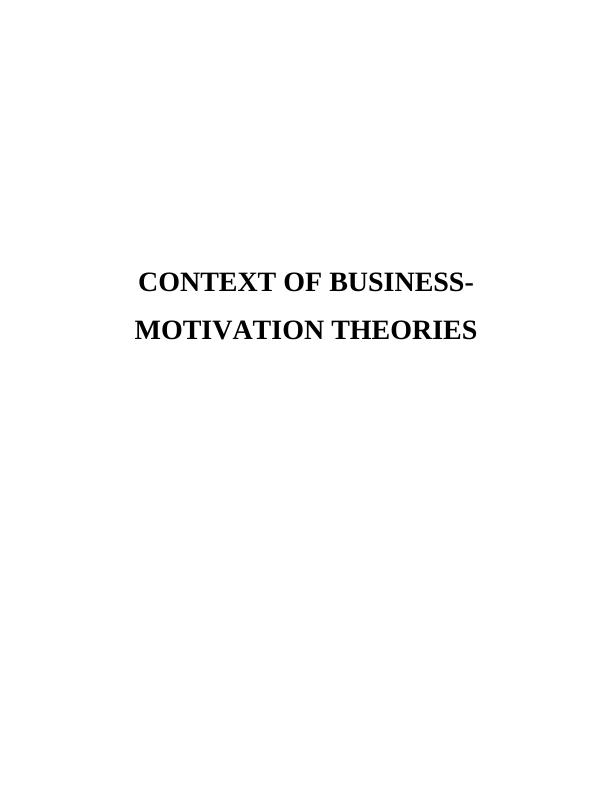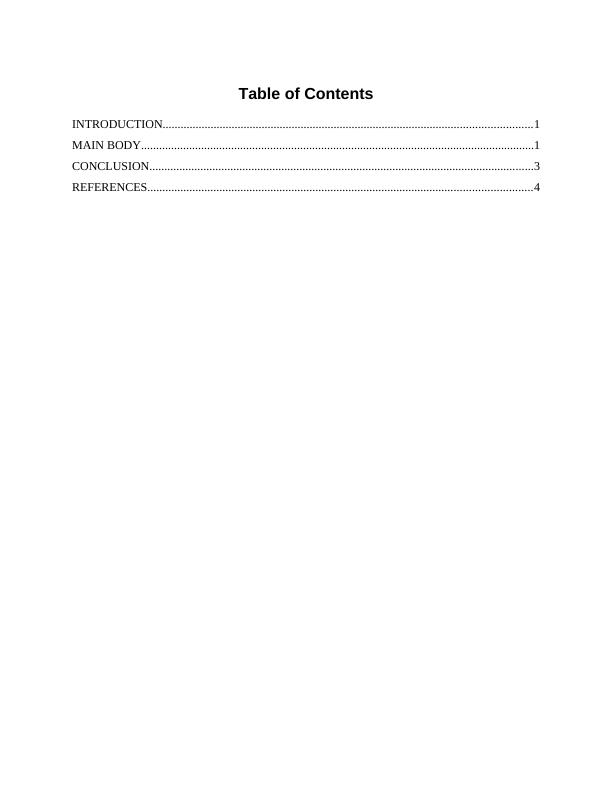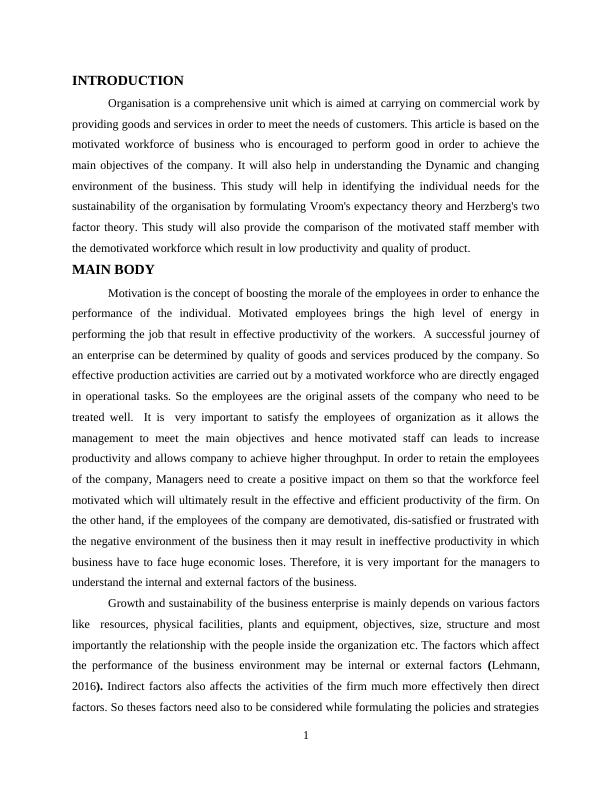Ask a question from expert
Business-MOTIVATION THEORIES INTRODUCTION 1 MAIN BODY1 CONCLUSION 3 REFERENCES 4 INTRODUCTION Organisation
7 Pages1662 Words301 Views
Added on 2020-12-09
About This Document
This study will help in identifying the individual needs for the sustainability of the organisation by formulating Vroom's expectancy theory and Herzberg's two factor theory. It is very important to satisfy the employees of organization as it allows the management to meet the main objectives and hence motivated staff can leads to increase productivity and allows company to achieve higher throughput.
Business-MOTIVATION THEORIES INTRODUCTION 1 MAIN BODY1 CONCLUSION 3 REFERENCES 4 INTRODUCTION Organisation
Added on 2020-12-09
BookmarkShareRelated Documents
End of preview
Want to access all the pages? Upload your documents or become a member.
Organizational Behavior - Assignment
|12
|3550
|372
Introduction to Business Studies
|10
|2816
|64
Leading Business Organisation Assignment
|14
|4490
|63
Managing People and Systems: Theories of Motivation and Application in Modern Organizations
|9
|1869
|323
Motivation Theories - Introduction
|8
|1350
|277
Reward Management Assignment | HRM Assignment
|1
|549
|58


